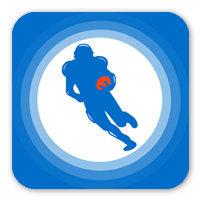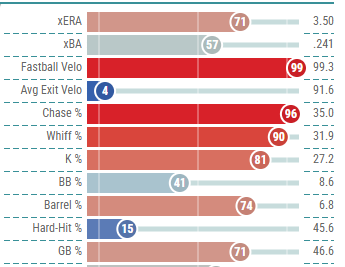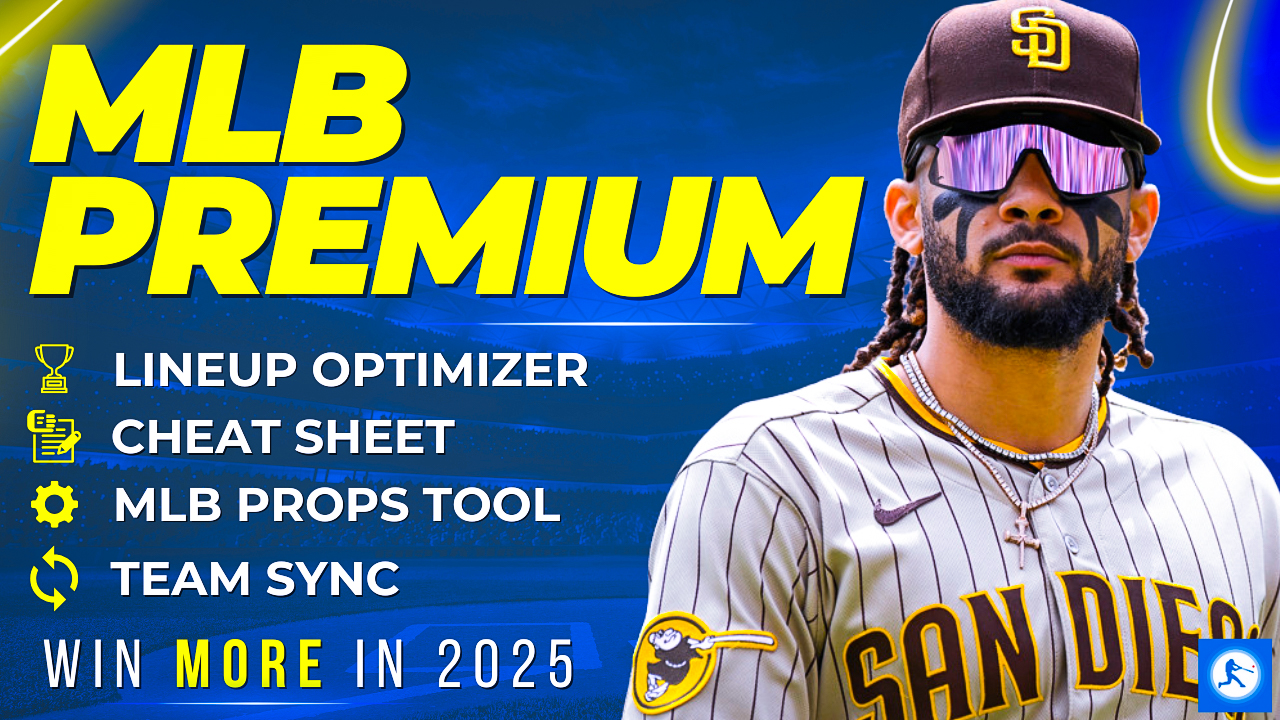Are Jakob Marsee and Ryan Helsley fantasy baseball sleepers, busts, or neither? Rick takes a deep dive into their 2025 fantasy baseball value.
In baseball, opportunities are a zero-sum game. Events like the trade deadline don't create opportunities since there are still no more than 90 starting outfielders and 30 closing gigs. For every player who gains an opportunity, another loses it. Astute fantasy managers need to pounce on new opportunities while casting the losers aside.
The Jesus Sanchez trade opened the door for Jakob Marsee, a 24-year-old non-prospect who has overperformed expectations throughout his MiLB career. His speed is intriguing in fantasy, but will he hit? Likewise, the Mets reinforced their bullpen with Ryan Helsley. He'll probably be a workable setup man, but will he have fantasy value in that role?
Here's a closer look at two names dramatically affected by the trade deadline.
Be sure to check all of our fantasy baseball draft tools and resources:- Fantasy baseball draft kit
- Fantasy baseball rankings
- Team Sync platform and Draft Assistant
- Fantasy baseball mock draft simulator
- Fantasy baseball draft cheat sheets
- Fantasy baseball closer depth charts
- Fantasy baseball prospects
Jakob Marsee (OF, Miami Marlins)
2% Rostered
Marsee has three MLB games under his belt, slashing a robust .500/.667/1.125 in 12 plate appearances (PAs). That's obviously way too small a sample to determine anything, and expectations are low based on his scouting report. However, his MiLB track record suggests he is viable in fantasy.
Let's get the negative out of the way first: Marsee isn't much of a prospect. Here is his FanGraphs scouting report:
Plus wheels are nice, and the hit tool isn't hopeless, but an outfielder who struggles with power, fielding, and throwing isn't exciting. He also struggles to access his limited power in games, further hindering his value. His profile compares him to Jake McCarthy with more loft in his swing.
MiLB.com is more bullish on Marsee than FanGraphs, but he still ranks just 10th in the Miami organization:
This report is higher on Marsee's hit tool and fielding acumen but lower on his speed, which is probably a wash for fantasy purposes. It's easy to see why Marsee is overlooked in fantasy circles based on these reports.
Marsee has something that isn't captured by traditional scouting reports, however: an eagle eye. Marsee is more than willing to work a walk, giving him a consistent path to getting on base and stealing second. He also makes up for his lack of raw power with a fly-heavy approach, so he shouldn't be a complete zero in the power categories.
Marsee first reached the High Minors as a member of the Padres organization, slashing .286/.412/.446 with three homers and five steals in 69 PAs for Double-A (San Antonio) in 2023. He wasn't caught stealing and stole 46 bags in 55 attempts across all levels for an 84 percent success rate. That's the fantasy upside.
It's a small sample, but Marsee's 15.9 percent BB% and 21.7 percent K% were impressive. His 8.2 percent swinging strike percentage (SwStr%) suggests swing-and-miss wasn't an issue, and he flashed power upside with a 41.5 percent FB% and 17.6 percent HR/FB. The 29.4 percent infield fly ball percentage (IFFB%) was too high to sustain his .342 BABIP, but the overall package was intriguing.
Unfortunately, things fell apart last year. He hit .176/.336/.318 with two homers and 12 steals in 109 PAs for San Antonio before his inclusion in the Luis Arraez trade. Marsee was caught stealing once for a 92 percent success rate, and his plate discipline remained strong with a 17.4 percent BB% against a 22 percent K%, while his 7.9 percent SwStr% was a slight improvement.
His 55.7 percent FB% was way too high, though, especially when paired with a 17.6 percent IFFB% and 5.9 percent HR/FB. The resulting .217 batting average on balls in play (BABIP) doomed his surface stats and expedited his trade to Miami.
The Marlins assigned Marsee to Double-A (Pensacola), but the change of scenery didn't alter his performance. He hit .188/.342/.303 with seven homers and 32 steals in 401 PAs. His plate discipline remained strong with a 15.2 percent BB% and 22.7 percent K%, with his 7.8 percent SwStr% virtually repeating. He was caught stealing six times for an 84 percent success rate.
Marsee's 46.3 percent FB% was too high, and his 28.6 percent IFFB% was problematically elevated. His 6.7 percent HR/FB was slightly better, but still not high enough for his FB%. The resulting .237 BABIP dragged Marsee's average down.
The Marlins somehow decided Marsee's performance warranted a promotion to Triple-A (Jacksonville), where he hit .275/.370/.363 with a homer and seven steals over 93 PAs. His BABIP surged to .356 thanks to a 33.9 percent FB%, but the rest of his peripherals were unchanged.
Marsee's plate discipline remained solid with a 12.9 percent BB% and 21.5 percent K% backed by an 8.9 percent SwStr%. He still hit too many pop-ups with a 20 percent IFFB%. His five percent HR/FB was very low. He wasn't caught stealing.
Marsee returned to Jacksonville to begin 2025 and slashed .246/.379/.438 with 14 HR and 47 steals in 429 PAs. He was caught stealing 13 times for a 78 percent success rate, slightly worse than his established baseline but still good enough to maintain the green light. He also improved his HR/FB to 13.1 percent, giving him a reason to maintain a 40.4 percent FB%.
Marsee's plate discipline was again outstanding with a 15.9 percent BB% and 18.9 percent K% backed by a 7.7 percent SwStr% and 18.8 percent chase rate. His 24.3 percent IFFB% was too high and partially to blame for his .282 BABIP.
Overall, Marsee's consistent record on the farm tells us who he is. He's fast and aggressive on the bases, so a 30 SB pace should be expected. His plate discipline is excellent, maintaining double-digit walk rates despite his speed. He lifts the ball enough to run into a few homers but lacks the raw pop to be a true power threat. Pop-ups will limit his batting average.
Marsee debuted hitting ninth for the Fish but was promoted to sixth in his second game, where he's remained since. That suggests the Marlins are willing to let him earn a meaningful lineup spot and bolster his fantasy value. Miami isn't as bad as expected in March either, sitting in third ahead of Atlanta.
Marsee has elite SB upside with strong enough plate discipline that he shouldn't be overmatched by MLB hurlers. If you need speed, this Champ is probably available to you. He has added value in OBP formats.
Ryan Helsley (RP, New York Mets)
86% Rostered
Helsley is 3-1 with a 2.92 earned run average (ERA) in 37 innings pitched (IP) this season, but he lost the closer's job when the Cardinals shipped him to New York. Edwin Diaz is entrenched in the ninth inning, begging the question of whether Helsley is a fantasy asset without saves.
The answer is no. Non-closing relievers are rostered to help with strikeouts and ratios, and Helsley is falling short in both categories this year. His 27.2 percent K% is strong, and his slider remains elite with a 27.8 percent SwStr%, 47.9 percent chase rate, and .103/.162/.301 triple slash line against. Its Zone% is only 44.7 percent, though, forcing Helsley to throw his fastball.
Helsley's fastball averages 99.3 mph and 2,525 rotations per minute (RPM), so you'd think it would be as dominant as his slider. It isn't. The fastball's 7.6 percent SwStr% is only average despite velocity and spin because its 89% active spin doesn't give it the late life of elite heat. Hitters are also hitting .408/.476/.521 against it.
Helsley's Statcast profile helps put that into perspective:
Helsley is great at strikeouts but middling at best when contact is made. That's also reflected in his ratios. Helsley's 1.41 WHIP actively hurts fantasy managers, while his 3.50 xERA and 3.32 xFIP aren't good enough to roster for ratio help alone.
Relievers don't throw the innings starters do, so they need tremendous rate stats for fantasy viability. The gold standards in recent years have been Cade Smith and Jason Adam, and Smith is closing with Emmanuel Clase on administrative leave for gambling accusations. So, let's compare Helsley to Adam.
Adam has a 1.86 ERA in 53 1/3 IP, giving him a full run advantage over Helsley that rises to a run and a half if you use Helsley's ERA estimators instead. Adam posted a sub-2.00 ERA in three of the last four years (counting 2025), while Helsley has only done it once (2022). Adam is the better bet for ERA.
Robert Suarez is a somewhat shaky ninth-inning option, so you can squint and see Adam getting saves (or at least you could before the Padres acquired Mason Miller). Barring injury, Helsley has no chance of usurping Diaz.
Adam's 1.24 WHIP is also better than Helsley's. Helsley beats Adam's 25.1 percent K%, but the latter has enough of an innings advantage to win handily in raw strikeouts, 56 to 44. Adam is clearly superior for fantasy purposes, but is only rostered in 38 percent of leagues.
Helsley was a fantasy asset earning saves for the Cardinals, but he's nothing more than the backup to an established closer as a Met. At age 31, Helsley is unlikely to get better. His ratios aren't good enough to roster on their own, making Helsley a Chump who should be dropped in the vast majority of leagues.
Download Our Free News & Alerts Mobile App
Like what you see? Download our updated fantasy baseball app for iPhone and Android with 24x7 player news, injury alerts, sleepers, prospects & more. All free!






 RADIO
RADIO



























